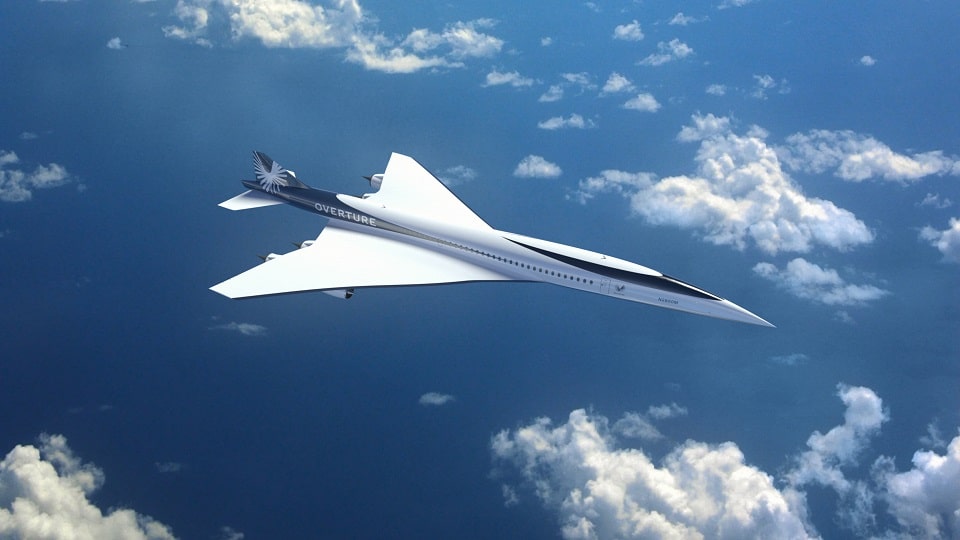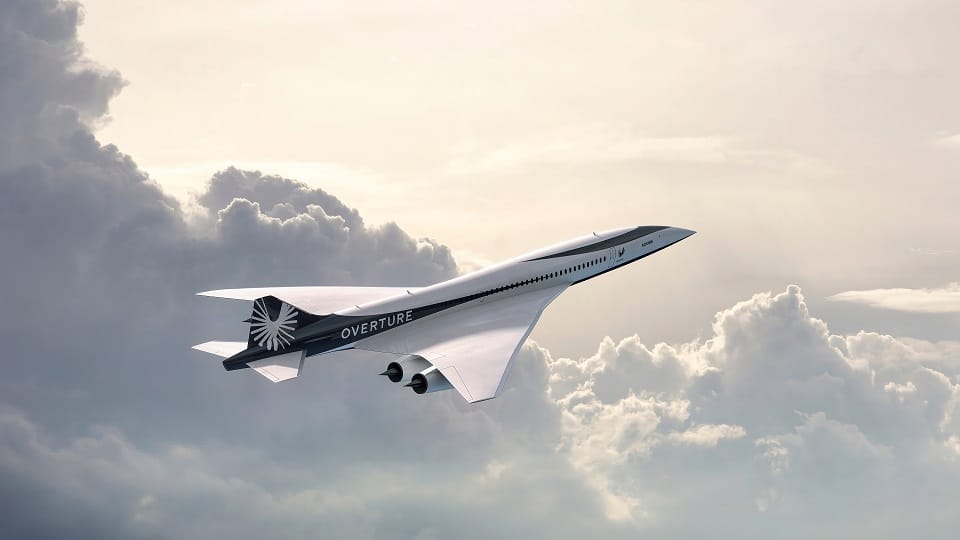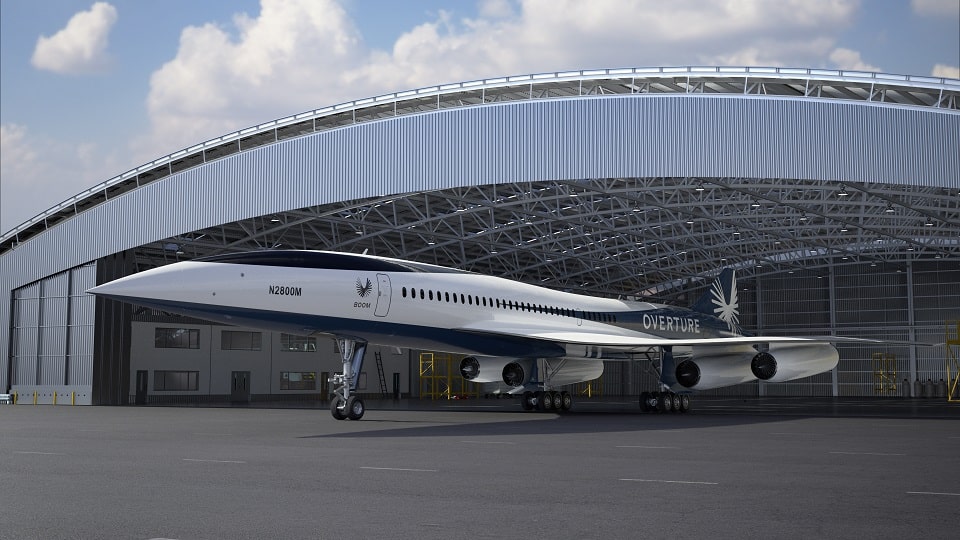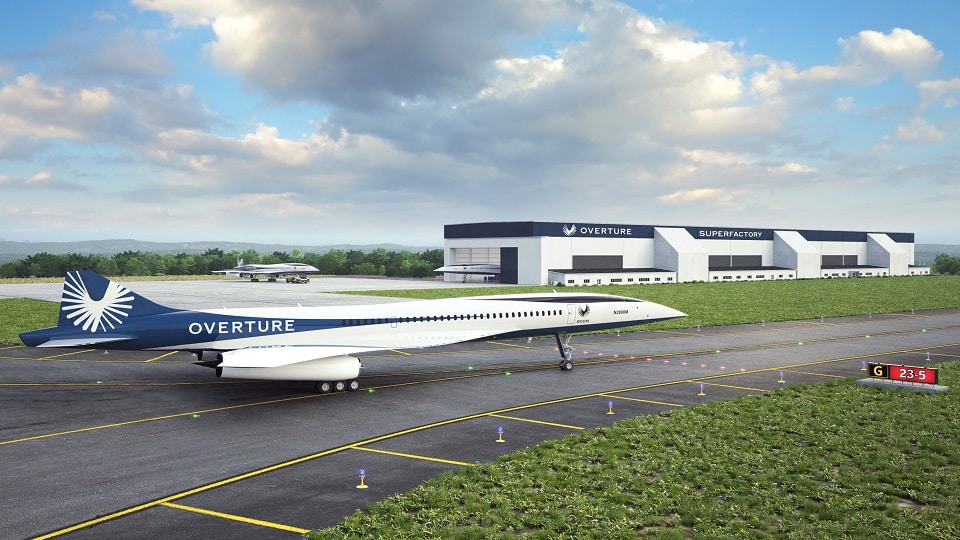Aerospace
Supersonic flight will soon become a reality. Prepare to soar above the speed of sound.
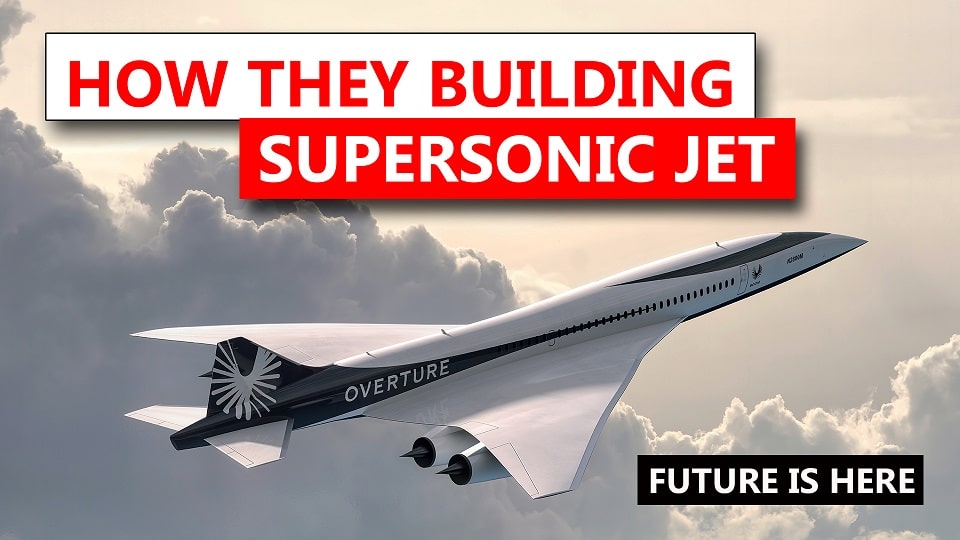
The Boom Overture is a US company that claims to be developing a super-fast commercial jet that can travel at Mach 1.7, or about 1,800 km/h, which is comparable to the speed of any fighter jet aircraft.
The program began at the beginning of 2016, and at the 2017 Paris Airshow, many airlines expressed interest in and commitment to purchasing the booming aircraft.
We discover more about this airplane in this article. How this airplane was created as well as some of its interesting features.
The supersonic jet can accommodate 65 to 88 passengers in an aircraft with a 7,870-kilometre range. This supersonic aircraft travels great distances in fast succession. There are 500 potential routes, the business believes, that could provide healthy profits for airlines. By 2029, the airplane will be ready.
The Concorde-like delta wing structure of the aircraft will be replaced by a composite version. It is anticipated that it will be propelled by four dry or non-afterburning engines, each of which can provide between 67 and 89 kilonewtons of thrust. Once the engine is built, the aircraft takeoff sound will be evaluated and adjusted. The aircraft must comply with airport regulations.
1. Boom Engine development
Initially, Rolls Royce was the first option for the engine’s development; however, it eventually withdrew from the project. Now, Boom Company has identified an engine partner to help it develop its aircraft engine.
For use in Overture, the Boom Symphony, a two-spool medium-bypass turbofan engine, is currently being developed. The engine is intended to launch with a thrust of 35,000 pounds (160 kN), maintain Overture supercruise at Mach 1.7, and only burn sustainable aviation fuel.
Together with the Kratos subsidiary Florida Turbine Technologies for engine design, the General Electric subsidiary GE Additive for additive manufacturing consultancy, and StandardAero for maintenance, the engine will be developed. Boom hopes to start producing the engine at the Overture facility in Greensboro, North Carolina, in 2024.
2. The latest GE Technology engine and Sustainable fuel.
The business is also integrating GE additive into the Symphony initiative, which is primarily focused on advancing the development of ultrafast and lightweight engines. The main engine designer is Florida Turbine Technologies, which has experience designing engines for aircraft powered by the F-22 and F-35 engines. Boom is driving the development of the engine by merging all of the concept creations.
The new propulsion system for Overture will produce no carbon emissions and adhere to Chapter 14 noise standards. Symphony is anticipated to give a 25% increase in time on the wing and much cheaper engine maintenance expenses as compared to derivative techniques, lowering overall aircraft operating costs for airline customers by 10%.
Gulfstream G700 and G800 earn EASA certification(Opens in a new browser tab)
This airplane engine was created using additive manufacturing to minimize weight, the number of parts, and assembly costs. It also features a single-stage fan for quiet operation and a passively cooled high-pressure turbine.
Although it lacks an afterburner and is equipped with twin-spool and medium bypass turbofan engines, the aircraft will run on 100% sustainable aviation fuel.
3. Crew Training Program
Supersonic aircraft flying is difficult. Flying such aircraft requires a lot of experience due to the fact that they may attain speeds of up to 1.7 mach in a short period of time. Another amazing experience is further balancing all the airplane and engine thrust.
The Overture supersonic flight training and education program has chosen FlightSafety International (FSI) as its exclusive partner. The world’s top commercial aircraft producers and operators turn to FSI as the go-to source for professional aviation training and flight simulators.
Airbus delivers its first aircraft produced in the USA.(Opens in a new browser tab)
Boom supersonic aircraft all it goes with the simulation performance before it hits the air as pilots and crews will go through all types of training. The FSI is will conduct the training program for the crews.
FSI will develop a training program and curriculum for Overture pilots, mechanics, and cabin crew, specifically tailored for supersonic flight and operations. The comprehensive training program will leverage the expertise of professional FAA and EASA-qualified instructors and include state-of-the-art flight simulators and training environments. To support Boom’s commercial airline customers who conduct their own internal training, FSI will provide full-flight simulators.
4. State of the Art infrastructure.
Building the aircraft must be a required sophisticated plant and obviously, the superstructure since Boom supersonic has done the deal with Advanced integration technology as the tooling and automation provider and integrator for the Overture final assembly line. spans the design, fabrication, and installation of custom tooling for the Overture Superfactory.
AIT will provide an end-to-end system for the Superfactory, creating transportation and positioning tools for
fuselage assembly, wing assembly, wing-to-fuselage joining, and final assembly. Major hardware provided by AIT will include automated drilling machinery, mobile transport equipment, and setups for positioning and joining setups. Boom is prioritizing
5. Boom Overture Total orders.
Many orders were received before the flight’s completion. The majority of airlines believe that if it is successful, it will lead to new developments in air travel.
It was confirmed in December 2017 that Japan Carriers has pre-ordered up to 20 jets out of the 76 that five airlines had committed to buying. The CEO of Boom, Blake Scholl, predicts that 2,000 supersonic aircraft will link 500 cities and offers a one-way fare of £2,000 from London to New York that is similar to the current subsonic business class.
United Airlines announced on June 3, 2021, that it has inked a contract to buy 15 Overture aircraft with an additional 35 options, with plans to begin passenger service by 2029. American Airlines announced a deal to buy 20 Overture planes on August 16, 2022, with an additional 40 options.
As of the right moment, it has received 35 aircraft orders from all across the world, and 171 aircraft commitment orders will be made once the flight begins accepting passengers. Boom Supersonic may anticipate roughly 206 aircraft in the near future, securing its position as a market leader for supersonic aircraft.

Aerospace
Boeing Transfers Rocket Stage to NASA, Paving Way for Human Moon Mission

Boeing has achieved a significant milestone by providing NASA with the second core stage of the Space Launch System (SLS) rocket.
This crucial component, crafted at NASA’s Michoud Assembly Facility (MAF), is set to propel the Artemis II crew into lunar orbit, marking humanity’s return to deep space after a 50-year hiatus.
The monumental Boeing-built rocket stage, the largest element of the Artemis II mission, will embark on a journey aboard the Pegasus barge, traveling 900 miles to NASA’s Kennedy Space Center.
Comparison of two legendary aircraft B777x vs B747 aircraft:Click here
Upon arrival, it will be meticulously integrated with other essential Artemis II components, including the upper stage, solid rocket boosters, and NASA’s Orion spacecraft within the iconic Vehicle Assembly Building. This intricate integration process is a vital step toward the eagerly anticipated Artemis II launch, slated for 2025.
“Boeing-built products helped land humankind on the moon in 1969, and we’re proud to continue that legacy through the Artemis generation,” remarked Dave Dutcher, vice president and program manager for Boeing’s SLS program. “Together, with NASA and our industry partners and suppliers, we are building the world’s most capable rocket and paving the way to deep space through America’s rocket factory in New Orleans.”
NASA, Lockheed Martin Reveal X-59 Quiet Supersonic Aircraft:Click here
The delivery of Core Stage 2 marks a significant achievement in the evolution of the SLS rocket. Towering over 200 feet and powered by four RS-25 engines, this core stage, coupled with two solid-fueled booster rockets, will generate a staggering 8.8 million pounds of thrust. This immense power is crucial to launching Artemis II and future missions into the vast expanse of space.
The SLS rocket stands unparalleled in its capability to transport both crew and substantial cargo to the moon and beyond in a single launch. Its extraordinary capacity will facilitate the delivery of human-rated spacecraft, habitats, and scientific missions to destinations including the moon and Mars, ushering in a new era of space exploration.
-

 Travel1 week ago
Travel1 week agoAir India to Expand US Operations with Three New Routes After a Decade
-

 Travel2 weeks ago
Travel2 weeks agoWhy We Should Avoid These Stamps in a Passport
-

 Airlines1 month ago
Airlines1 month agoInvestigations Reveal Fake Chinese Titanium in Boeing and Airbus Jets
-

 Tech4 weeks ago
Tech4 weeks agoChina’s CATL Plans 1,800-Mile Electric Plane Launch by 2027
-

 Airport3 days ago
Airport3 days agoTop 10 Largest Airports in the World by Size
-

 Aerospace4 weeks ago
Aerospace4 weeks agoChina’s Fighter Jets Turn Wings into Autonomous Drones
-

 Airlines4 days ago
Airlines4 days agoAir India Rolls Out A350s for Delhi-New York JFK and Newark Routes
-

 Defence3 weeks ago
Defence3 weeks agoBoeing Enhances Chinook with New Engines and Block II Upgrades at $96 Million

